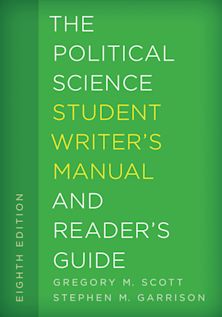- Home
- ACADEMIC
- Politics & International Relations
- Introduction to Politics
- Introduction to Peace and Conflict Studies
Exam copy added to basket
Choose your preferred format. Please note ebook exam copies are fulfilled by VitalSource™.
Buy from Bloomsbury eTextBooks
You are now leaving the Bloomsbury Publishing website. Your eBook purchase will be with our partner https://www.vitalsource.com.
Your credit card statement will show this purchase originating from VitalSource Technologies. They will also provide any technical assistance you might require.
You must sign in to add this item to your wishlist. Please sign in or create an account
Description
This book integrates research and theoretical findings from multiple disciplines to present a holistic approach to conflict resolution. It highlights the wide-ranging and compelling relevance of Conflict Resolution Studies by exploring the entire spectrum of applications in interpersonal relationships, family and group functioning, and national and international relations.
Table of Contents
Introduction to Conflict Concepts and Peace and Conflict Studies
Section 1 Interpersonal Conflict Resolution
1 Individual Factors Related to People in Conflict
2 Interpersonal Factors Related to People in Conflict
3 Sources and Drivers of Conflict, and Perception of Problems
4 Conflict Development and Process
Section II Groups in Conflict
5 Diversity Studies, Intersectionality, and Conflict
6 Conflict within Families
7 Conflict in the Workplace
Section III Conflict and Violence
8 The Problems of Interpersonal Violence
9 The Problems of National and International Violence
Section IV Conflict Resolution
10 Justicemaking and Third Party Resolution
11 The Goals of Peacebuilding
12 Transformative Conflict Resolution and Social Change
Conclusion Professional Practice and Careers in Peace and Conflict Resolution
Product details
| Published | May 21 2021 |
|---|---|
| Format | Ebook (PDF) |
| Edition | 1st |
| Extent | 520 |
| ISBN | 9798765193518 |
| Imprint | Association for Conflict Resolution |
| Illustrations | 34 b/w illustrations; 27 b/w photos; 31 tables; 23 textboxes |
| Publisher | Bloomsbury Publishing |
About the contributors
Reviews
-
This textbook takes a new approach to the field of peace and conflict studies. A very competent survey by a reputable scholar, it touches many major themes in the field…. The bibliographic apparatus demonstrates that Edmund is well read in the field[.] Upper-division undergraduates. Faculty. General readers.
Choice Reviews
-
Peace and Conflict Studies programs have proliferated in the past 25 years without a foundational text to capture the breadth of the field. Introduction to Peace and Conflict Studies by Lois Edmund fills that gap with a comprehensive overview of the field. This introductory text will be of great use to those interested in learning more about the field and for students curious enough begin the study of peace and conflict.
Douglas E. Noll, JD, MA, author of De-Escalate: How to Calm an Angry Person in 90 Seconds or Less and co-founder of the Prison of Peace Project
-
Lois Edmund took a delightful, reflective approach to distill the complex subjects of conflict and peace studies into a relatable and easily comprehensible read for those new to these subjects. The depth she provides throughout each of the subjects makes this book also beneficial for seasoned practitioners looking to enhance their theoretical understanding of the conflict engagement and peacebuilding work they perform. I feel optimistic about our world with this comprehensive text on the bookshelf of those who are freshly introduced to the principles of conflict. It will provide future generations with a deeper understanding of conflict and the tools to engage constructively.
Bryan Hanson, Virginia Tech
-
This book accomplishes its title’s ambitious goal. It is a comprehensive introduction to every essential topic in the field of conflict resolution. Each chapter is thoroughly researched and well written. The book is an excellent launching pad for anyone wishing to delve more deeply into any topic the book introduces.
Walter A. Wright, Texas State University

































